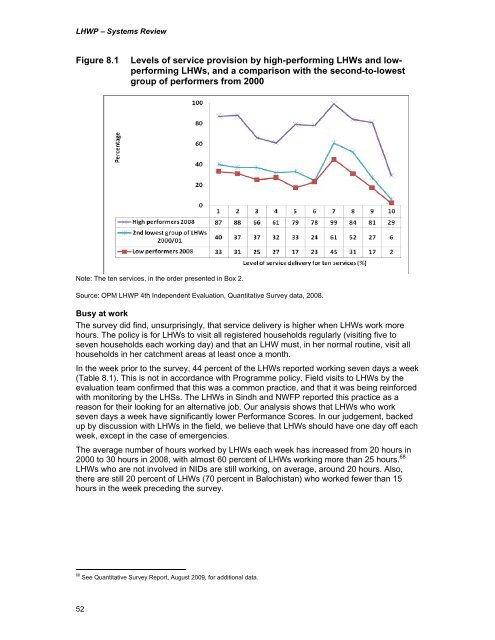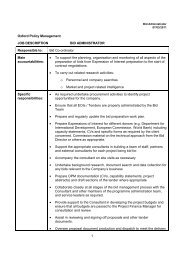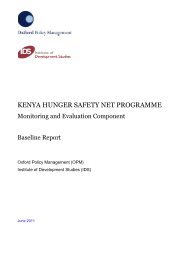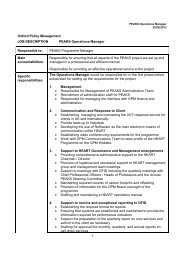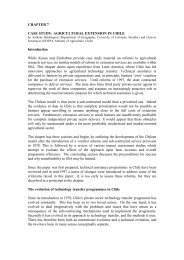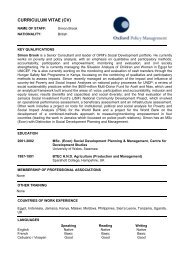LHW Systems Review - Oxford Policy Management
LHW Systems Review - Oxford Policy Management
LHW Systems Review - Oxford Policy Management
You also want an ePaper? Increase the reach of your titles
YUMPU automatically turns print PDFs into web optimized ePapers that Google loves.
<strong>LHW</strong>P – <strong>Systems</strong> <strong>Review</strong>Figure 8.1Levels of service provision by high-performing <strong>LHW</strong>s and lowperforming<strong>LHW</strong>s, and a comparison with the second-to-lowestgroup of performers from 2000Note: The ten services, in the order presented in Box 2.Source: OPM <strong>LHW</strong>P 4th Independent Evaluation, Quantitative Survey data, 2008.Busy at workThe survey did find, unsurprisingly, that service delivery is higher when <strong>LHW</strong>s work morehours. The policy is for <strong>LHW</strong>s to visit all registered households regularly (visiting five toseven households each working day) and that an <strong>LHW</strong> must, in her normal routine, visit allhouseholds in her catchment areas at least once a month.In the week prior to the survey, 44 percent of the <strong>LHW</strong>s reported working seven days a week(Table 8.1). This is not in accordance with Programme policy. Field visits to <strong>LHW</strong>s by theevaluation team confirmed that this was a common practice, and that it was being reinforcedwith monitoring by the LHSs. The <strong>LHW</strong>s in Sindh and NWFP reported this practice as areason for their looking for an alternative job. Our analysis shows that <strong>LHW</strong>s who workseven days a week have significantly lower Performance Scores. In our judgement, backedup by discussion with <strong>LHW</strong>s in the field, we believe that <strong>LHW</strong>s should have one day off eachweek, except in the case of emergencies.The average number of hours worked by <strong>LHW</strong>s each week has increased from 20 hours in2000 to 30 hours in 2008, with almost 60 percent of <strong>LHW</strong>s working more than 25 hours. 68<strong>LHW</strong>s who are not involved in NIDs are still working, on average, around 20 hours. Also,there are still 20 percent of <strong>LHW</strong>s (70 percent in Balochistan) who worked fewer than 15hours in the week preceding the survey.68See Quantitative Survey Report, August 2009, for additional data.52


